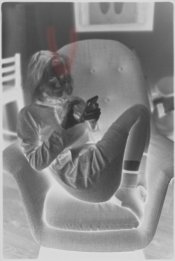Gabriel Aszalos
Member
I've developed my latest roll as usual, and found the last 2 frames had something that looks like drying marks on them, except I was not able to wipe them off regardless of what I tried. I even tried re-soaking the frame in distilled water and photoflo again to try, but the stain is still there. Does anyone have any idea what these are and how it happened? I use the Ilford method (like in their Youtube video) to develop. At the end I soak the film in distilled water with Photoflo for about 2 minutes, mixing occasionally.
https://i.ibb.co/1GtWwdV/IMG-0037.jpg
https://i.ibb.co/1GtWwdV/IMG-0037.jpg








 If might be easier and just as good to show the marks by reversing the negative so it appears as a print
If might be easier and just as good to show the marks by reversing the negative so it appears as a print 


